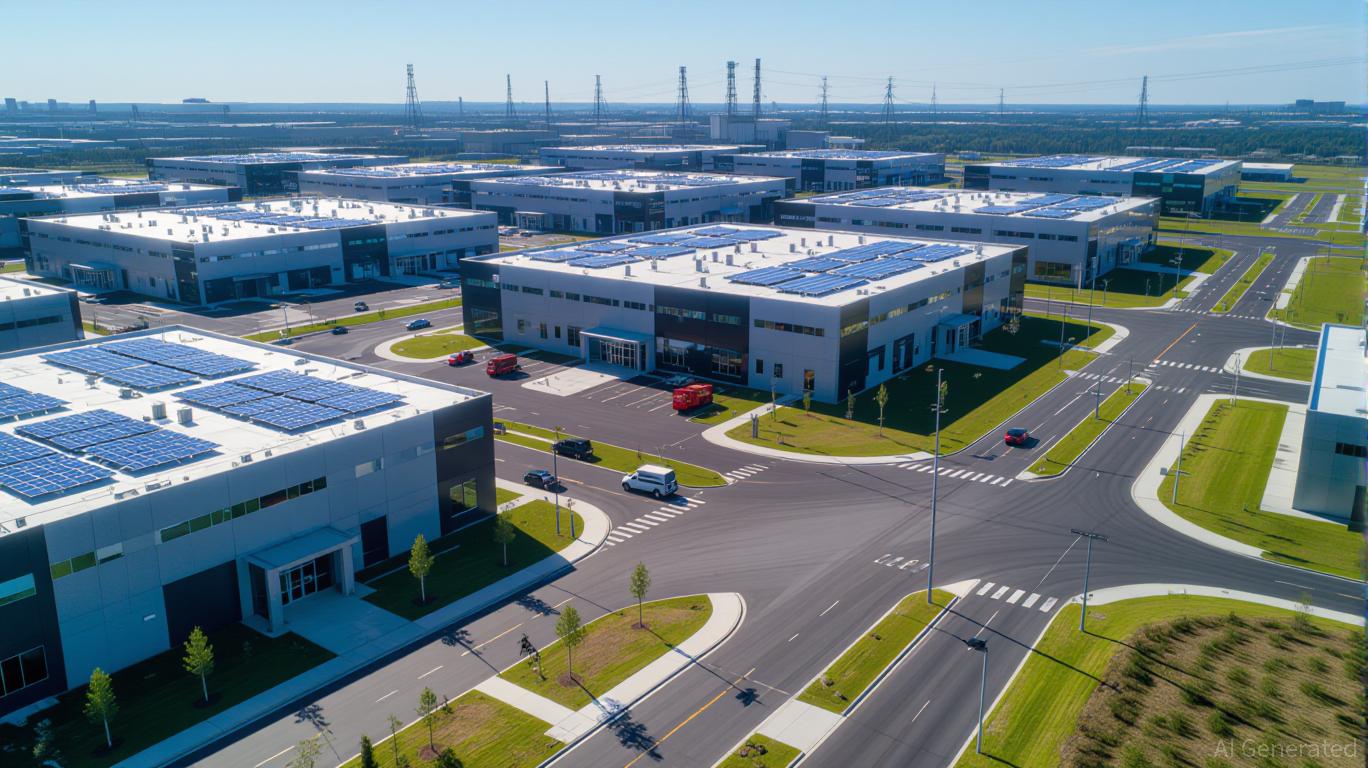Evaluating How Vitalik Buterin’s Support for ZKsync Influences Layer-2 Adoption and Shapes Sentiment in the Crypto Market
- Vitalik Buterin's X post endorsing ZKsync triggered a 143% surge in $ZK, highlighting L2 scalability's market impact. - ZKsync's 'Atlas' upgrade, leveraging GKR protocol, achieved 43,000 TPS with low fees, addressing Ethereum's scalability. - Institutional partnerships (Citi, Deutsche Bank) and Prividium's hybrid model drive ZK Layer 2 market to $90B by 2031. - Buterin's endorsement validates ZKsync's role in Ethereum's roadmap, boosting investor confidence in L2 solutions.
Technical Breakthroughs and Market Validation
ZKsync’s latest “Atlas” update, which brought institutional-level scalability and cross-chain compatibility, set the stage for Buterin’s recognition. By incorporating the GKR protocol—a zero-knowledge verification system co-created by Buterin—the upgrade slashed verification expenses by up to 15 times, allowing for transaction throughput of 43,000 TPS with very low fees Vitalik Buterin's Latest ZK-Focused Statement and What It ..., [bitget.com] [ 1 ]. This major technical advance not only tackles Ethereum’s persistent scalability issues but also positions
The market reacted quickly. After Buterin’s post, $ZK jumped 143% within two days, with ZKsync’s market capitalization briefly exceeding $600 million. This volatility highlights the token’s speculative nature, but also signals increasing confidence from major institutions. For example, Deutsche Bank and Sony have already implemented ZK-rollups to enhance regulatory compliance and transaction efficiency Vitalik Buterin's Latest ZK-Focused Statement and What It ..., [bitget.com] [ 1 ], indicating a move from experimental applications to real-world business adoption.

Institutional Adoption and Hybrid Ecosystems
ZKsync’s “Prividium” project further boosts its strategic importance. This private, permissioned Layer 2 solution merges institutional privacy with public transparency, drawing over 30 major financial institutions—including Citi, Deutsche Bank, and Mastercard—to participate in pilot programs. Such collaborations are essential for connecting traditional finance (TradFi) with decentralized finance (DeFi), a movement expected to propel the
Buterin’s support significantly enhances the credibility of these efforts. His focus on ZKsync’s impact on “liquidity flows on Ethereum-based L2 networks” is in line with major Ethereum upgrades, such as the upcoming Cancun-Deneb hard fork, which aims to improve data availability and rollup performance Ethereum Founder Vitalik Buterin Triggered 120% ZkSync .... Investors who get involved early in projects that align with Ethereum’s roadmap—especially those with strong institutional ties—stand to gain from the compounding growth as hybrid TradFi-DeFi systems evolve.
Strategic Investment Considerations
The present market climate marks a pivotal moment. While ZKsync’s token rally has been marked by volatility, it reflects a broader trend of increasing L2 adoption. Still, investors should temper enthusiasm with prudence. The 143% rise in $ZK’s value, though remarkable, also points to its vulnerability to speculative swings. Diversifying investments across Ethereum ecosystem projects that combine technical innovation with institutional support can help manage risk while taking advantage of long-term opportunities.
Additionally, ZKsync’s emphasis on asset tokenization and cross-chain compatibility fits with larger shifts in the crypto sector. As regulations develop, platforms offering compliance-friendly features (such as Prividium) are likely to lead the market. This positions ZKsync not just as a strong L2 contender, but as a key force in shaping Ethereum’s future expansion.
Conclusion
Vitalik Buterin’s endorsement of ZKsync goes beyond a simple social media mention—it affirms the platform’s technical excellence and its alignment with Ethereum’s scaling ambitions. The resulting price rally and institutional collaborations highlight a broader industry movement toward L2 solutions that can support enterprise-scale operations. For investors, this is a rare chance to benefit from a bullish catalyst as Ethereum’s ecosystem strengthens its role as the foundation of Web3.
With the ZK Layer 2 sector on track to reach a $90 billion valuation by 2031, strategic investments in innovators like ZKsync—supported by cryptographic breakthroughs and institutional interest—are poised to excel in a market increasingly shaped by the convergence of traditional and decentralized finance.
Disclaimer: The content of this article solely reflects the author's opinion and does not represent the platform in any capacity. This article is not intended to serve as a reference for making investment decisions.
You may also like
Ethereum News Update: Ethereum Holds at $2,900 Amid ETF Purchases, Federal Reserve Ambiguity, and Liquidation Threats
- Ethereum (ETH) stabilized near $2,900 on Nov 25, 2025, amid anticipation of a potential Fed rate cut and conflicting on-chain/technical signals. - ETF inflows ($96.67M on Nov 24) and whale accumulation (3.63M ETH held) signaled growing confidence in altcoins despite Bitcoin's 58% dominance. - Technical indicators showed mixed momentum: MACD bullish but RSI neutral, with $3,132 EMA as a critical breakout threshold for further gains. - Risks persisted from October liquidations, treasury NAV adjustments, an
Ethereum News Today: Ethereum Holds Steady at $3,000 as Institutional Interest and the Conclusion of QT Indicate a Market Rebound
- Ethereum (ETH) has rebounded above $3,000, signaling market stabilization amid easing bearish sentiment driven by institutional demand, ETF inflows, and the Fed's ending QT cycle. - Analysts highlight 26-month high ETH demand metrics (90,995 ETH on Nov 26) and three-day ETF inflows ($230.9M) as technical and institutional confidence indicators. - The Fed's Dec 1 QT pause and dovish signals from John Williams, plus BlackRock's staked ETH ETF filing, reinforce crypto-friendly monetary policy expectations.

The transformation of the Xerox campus in Webster, NY: Driving Expansion in Industrial Real Estate and Infrastructure
- Webster’s Xerox Campus redevelopment transforms a 300-acre brownfield into a high-growth industrial hub by 2025 via $9.8M FAST NY grants and state funding. - Infrastructure upgrades (roads, sewer, power) position the site to compete with Sun Belt markets, attracting projects like a $650M dairy plant creating 250 jobs. - Low 2% industrial vacancy rates in Western NY and strategic proximity to Buffalo’s port highlight the region’s appeal for advanced manufacturing and logistics. - State-backed $283M Upstat

BTC breaks through $88,000